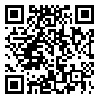1. Feigin VL, Brainin M, Norrving B, Martins S, Sacco RL, Hacke W, et al. World Stroke Organization (WSO): global stroke fact sheet 2022. Int J Stroke. 2022;17(1):18-29. [
DOI:10.1177/17474930211065917] [
PMID]
2. Robbins BT, Howington GT, Swafford K, Zummer J, Woolum JA. Advancements in the management of acute ischemic stroke: A narrative review. J Am Coll Emerg Physicians Open. 2023;4(1):e12896. [
DOI:10.1002/emp2.12896] [
PMID] [
PMCID]
3. Elfil M, Eldokmak M, Baratloo A, Ahmed N, Amin HP, Koo BB. Pathophysiologic mechanisms, neuroimaging and treatment in wake-up stroke. CNS Spectra. 2020;25(4):460-7. [
DOI:10.1017/S1092852919001354] [
PMID]
4. Maïer B, Desilles JP, Mazighi M. Intracranial hemorrhage after reperfusion therapies in acute ischemic stroke patients. Front Neurol. 2020;11:599908. [
DOI:10.3389/fneur.2020.599908] [
PMID] [
PMCID]
5. Siddiqi AZ, Wadhwa A. Treatment of acute stroke: current practices and future horizons. Cardiovasc Revascularization Med. 2023;49:56-65. [
DOI:10.1016/j.carrev.2022.11.012] [
PMID]
6. Hacke W, Kaste M, Bluhmki E, Brozman M, Dávalos A, Guidetti D, et al. Thrombolysis with alteplase 3 to 4.5 hours after acute ischemic stroke. New Eng J Med. 2008;359(13):1317-29. [
DOI:10.1056/NEJMoa0804656] [
PMID]
7. Powers WJ, Rabinstein AA, Ackerson T, Adeoye OM, Bambakidis NC, Becker K, et al. 2018 guidelines for the early management of patients with acute ischemic stroke: a guideline for healthcare professionals from the American Heart Association/American Stroke Association. Stroke. 2018;49(3):e46-e99. [
DOI:10.1161/STR.0000000000000158] [
PMID]
8. Mackey J, Kleindorfer D, Sucharew H, Moomaw C, Kissela B, Alwell K, et al. Population-based study of wake-up strokes. Neurology. 2011;76(19):1662-7. [
DOI:10.1212/WNL.0b013e318219fb30] [
PMID] [
PMCID]
9. Macha K, Hoelter P, Siedler G, Knott M, Schwab S, Doerfler A, et al. Multimodal CT or MRI for IV thrombolysis in ischemic stroke with unknown time of onset. Neurology. 2020;95(22):e2954-e64. [
DOI:10.1212/WNL.0000000000011059] [
PMID]
10. Broocks G, Leischner H, Hanning U, Flottmann F, Faizy TD, Schön G, et al. Lesion age imaging in acute stroke: water uptake in CT versus DWI‐FLAIR mismatch. Ann Neurol. 2020;88(6):1144-52. [
DOI:10.1002/ana.25903] [
PMID]
11. Jakubicek S, Krebs S, Posekany A, Ferrari J, Szabo J, Siarnik P, et al. Modified DWI-FLAIR mismatch guided thrombolysis in unknown onset stroke. J Thromb Thrombolysis. 2019;47:167-73. [
DOI:10.1007/s11239-018-1766-3] [
PMID]
12. Aoki J, Kimura K, Iguchi Y, Shibazaki K, Sakai K, Iwanaga T. FLAIR can estimate the onset time in acute ischemic stroke patients. J Neurol Sci. 2010;293(1-2):39-44. [
DOI:10.1016/j.jns.2010.03.011] [
PMID]
13. Ebinger M, Ostwaldt A-C, Galinovic I, Rozanski M, Brunecker P, Nolte CH, et al. Clinical and radiological courses do not differ between fluid-attenuated inversion recovery-positive and negative patients with stroke after thrombolysis. Stroke. 2010;41(8):1823-5. [
DOI:10.1161/STROKEAHA.110.583971] [
PMID]
14. Emeriau S, Serre I, Toubas O, Pombourcq F, Oppenheim C, Pierot L. Can diffusion-weighted imaging-fluid-attenuated inversion recovery mismatch (positive diffusion-weighted imaging/negative fluid-attenuated inversion recovery) at 3 Tesla identify patients with stroke at< 4.5 Hours?. Stroke. 2013;44(6):1647-51. [
DOI:10.1161/STROKEAHA.113.001001] [
PMID]
15. Huisa BN, Liebeskind DS, Raman R, Hao Q, Meyer BC, Meyer DM, et al. Diffusion-weighted imaging-fluid attenuated inversion recovery mismatch in nocturnal stroke patients with unknown time of onset. J Stroke Cerebrovasc Dis. 2013;22(7):972-7. [
DOI:10.1016/j.jstrokecerebrovasdis.2012.01.004] [
PMID] [
PMCID]
16. Wiśniewski A. Safety and efficacy of intravenous thrombolytic treatment in wake‐up stroke: Experiences from a single center. Brain Behav. 2021;11(6):e02152. [
DOI:10.1002/brb3.2152] [
PMID] [
PMCID]
17. Nagai K, Aoki J, Sakamoto Y, Kimura K. Approximately 30% of wake-up stroke patients may be candidate for the tPA therapy using negative-FLAIR as a "tissue clock". J Neurol Sci. 2017;382:101-4. [
DOI:10.1016/j.jns.2017.09.042] [
PMID]
18. Mac Grory B, Saldanha IJ, Mistry EA, Stretz C, Poli S, Sykora M, et al. Thrombolytic therapy for wake‐up stroke: A systematic review and meta‐analysis. Eur J Neurol. 2021;28(6):2006-16. [
DOI:10.1111/ene.14839] [
PMID]
19. Krebs S, Posekany A, Ferrari J, Lang W, Sommer P, Gattringer T, et al. Intravenous thrombolysis in wake‐up stroke: real‐world data from the Austrian Stroke Unit Registry. Eur J Neurol. 2019;26(5):754-9. [
DOI:10.1111/ene.13884] [
PMID]
20. Campbell BC, Ma H, Parsons MW, Churilov L, Yassi N, Kleinig TJ, et al. Association of reperfusion after thrombolysis with clinical outcome across the 4.5-to 9-Hours and wake-up stroke time window: a meta-analysis of the extend and epithet randomized clinical trials. JAMA Neurol. 2021;78(2):236-40. [
DOI:10.1001/jamaneurol.2020.4123] [
PMID] [
PMCID]
21. Liu M, Kobeissi H, Ghozy S, Kallmes DF. Outcomes of wake-up stroke undergoing mechanical thrombectomy: A systematic review and meta-analysis. Interv Neuroradiol. 2022:15910199221133167. [
DOI:10.1177/15910199221133167] [
PMID]
22. Roaldsen MB, Lindekleiv H, Mathiesen EB. Intravenous thrombolytic treatment and endovascular thrombectomy for ischemic wake‐up stroke. Cochrane Database Syst Rev. 2021;2021(12):CD01099 [
DOI:10.1002/14651858.CD010995.pub3] [
PMID] [
PMCID]
23. Biag E, Solis K, Abd Elazim A, Hussein O. COVID-19 Associated Wake-Up Stroke Treated With DWI/FLAIR Mismatch Guided Intravenous Alteplase: A Case Report. Neurologist. 2021;26(6):271. [
DOI:10.1097/NRL.0000000000000355] [
PMID] [
PMCID]
24. Roaldsen MB, Eltoft A, Wilsgaard T, Christensen H, Engelter ST, Indredavik B, et al. Safety and efficacy of tenecteplase in patients with wake-up stroke assessed by noncontrast CT (TWIST): a multicenter, open-label, randomized controlled trial. Lancet Neurol. 2023;22(2):117-26. [
DOI:10.1016/S1474-4422(22)00484-7] [
PMID]
25. Ahmed HK, Logallo N, Thomassen L, Novotny V, Mathisen SM, Kurz MW. Clinical outcomes and safety profile of Tenecteplase in wake‐up stroke. Acta Neurol Scand. 2020;142(5):475-9. [
DOI:10.1111/ane.13296] [
PMID]
26. Bhandari S, Baral MR, Espana Schmidt C. Thrombolytic Therapy in the Oldest Old: Successful Alteplase Administration in a 105-Year-Old Female With Ischemic Stroke. Cureus. 2021;13(11):e19346. [
DOI:10.7759/cureus.19346]
27. Bluhmki E, Danays T, Biegert G, Hacke W, Lees KR. Alteplase for acute ischemic stroke in patients aged> 80 years: pooled analyses of individual patient data. Stroke. 2020;51(8):2322-31. [
DOI:10.1161/STROKEAHA.119.028396] [
PMID] [
PMCID]








